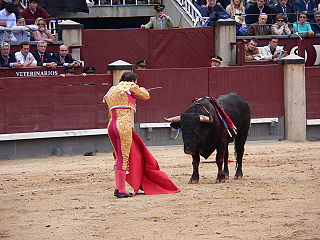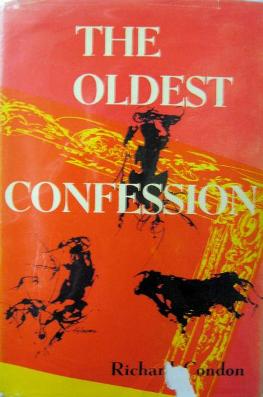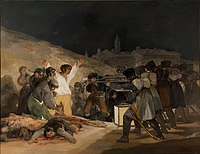
Francisco José de Goya y Lucientes was a Spanish romantic painter and printmaker. He is considered the most important Spanish artist of the late 18th and early 19th centuries. His paintings, drawings, and engravings reflected contemporary historical upheavals and influenced important 19th- and 20th-century painters. Goya is often referred to as the last of the Old Masters and the first of the moderns.
The year 1953 in film involved some significant events.
The year 1947 in film involved some significant events.
The year 1946 in film involved some significant events, including the release of the decade's highest-grossing film, The Best Years of Our Lives, which won seven Academy Awards.
The year 1945 in film involved some significant events. With 1945 being the last year of World War II, the many films released this year had themes of patriotism, sacrifices, and peace. In the United States, there were more than eighteen thousand movie theatres operating in 1945, a figure that grew by a third from a decade earlier.
The year 1941 in film involved some significant events, in particular the release of a film consistently rated as one of the greatest of all time, Citizen Kane.

Rita Hayworth was an American actress. She achieved fame in the 1940s as one of the top stars of the Golden Age of Hollywood, and appeared in 61 films in total over 37 years. The press coined the term "The Love Goddess" to describe Hayworth after she had become the most glamorous screen idol of the 1940s. She was the top pin-up girl for GIs during World War II.

A femme fatale, sometimes called a maneater or vamp, is a stock character of a mysterious, beautiful, and seductive woman whose charms ensnare her lovers, often leading them into compromising, deadly traps. She is an archetype of literature and art. Her ability to enchant, entice and hypnotize her victim with a spell was in the earliest stories seen as verging on supernatural; hence, the femme fatale today is still often described as having a power akin to an enchantress, seductress, witch, having power over men. Femmes fatales are typically villainous, or at least morally ambiguous, and always associated with a sense of mystification, and unease.

Samson and Delilah is a 1949 American romantic biblical drama film produced and directed by Cecil B. DeMille and released by Paramount Pictures. It depicts the biblical story of Samson, a strongman whose secret lies in his uncut hair, and his love for Delilah, the woman who seduces him, discovers his secret, and then betrays him to the Philistines. It stars Victor Mature and Hedy Lamarr in the title roles, George Sanders as the Saran, Angela Lansbury as Semadar, and Henry Wilcoxon as Prince Ahtur.

Shanghai Surprise is a 1986 adventure comedy film directed by Jim Goddard and starring then-newlyweds Sean Penn and Madonna. The screenplay was adapted by John Kohn and Robert Bentley from Tony Kenrick's 1978 novel Faraday's Flowers. Produced by George Harrison's HandMade Films and distributed by Metro-Goldwyn-Mayer, Harrison himself appears in the film as a night club singer, and he wrote and recorded five original songs for the soundtrack: "Shanghai Surprise", "Someplace Else", "Breath Away from Heaven", "Zig Zag", and "Hottest Gong in Town". The film was a critical and commercial failure, and an official soundtrack album was never released.

In Greek mythology, Pygmalion was a legendary figure of Cyprus. He is most familiar from Ovid's narrative poem Metamorphoses, in which Pygmalion was a sculptor who fell in love with a statue he had carved.

Chinchón is a town and municipality in the Community of Madrid, Spain. Located 50 km south-east of the city of Madrid, the municipality covers an area of 115.91 km2. As of 2018, it has a population of 5,239. Its historic centre, with a notable main square, was declared a Heritage Site in 1974.

Fer-de-Lance is the first Nero Wolfe detective novel written by Rex Stout, published in 1934 by Farrar & Rinehart, Inc. The novel appeared in abridged form in The American Magazine under the title "Point of Death". The novel was adapted for the 1936 film Meet Nero Wolfe, and it was named after a venomous snake with the same name. In his seminal 1941 work, Murder for Pleasure, crime fiction historian Howard Haycraft included Fer-de-Lance in his definitive list of the most influential works of mystery fiction.

The Frank E. Campbell Funeral Chapel is a funeral home located on Madison Avenue at 81st Street in Manhattan. Founded in 1898 as Frank E. Campbell Burial and Cremation Company, the company is now owned by Service Corporation International. Frank E. Campbell is known for handling many celebrity deaths and funerals including those of John Lennon, Jacqueline Kennedy Onassis, Rudolph Valentino, Arturo Toscanini, Judy Garland, Joan Crawford, Heath Ledger, Aaliyah, The Notorious B.I.G. and Tommy Dorsey.

Bullfighting is a physical contest that involves a bullfighter attempting to subdue, immobilize, or kill a bull, usually according to a set of rules, guidelines, or cultural expectations.

The Oldest Confession is a 1958 novel, the first of twenty-five by the American political novelist and satirist Richard Condon. It was published by Appleton-Century-Crofts. The novel is a tragicomedy about the attempted theft of a masterpiece from a museum in Spain. It can be classified as a caper story or caper novel, a subset of crime novels. The book deals with issues of money, greed, ethics and morality. It was adapted into a film retitled The Happy Thieves.

Julian Rivero was an American actor whose career spanned seven decades. He made his film debut in the 1923 silent melodrama, The Bright Shawl, which starred Richard Barthelmess, Dorothy Gish, William Powell, Mary Astor, and Edward G. Robinson. Over the next 50 years, Rivero would appear in well over 200 films and television shows.

A Village Bullfight or A Village Corrida is an oil painting by the Spanish painter Francisco Goya.

The tapestry cartoons of Francisco de Goya are a group of oil on canvas paintings by Francisco de Goya between 1775 and 1792 as designs for the Royal Tapestry Factory of Santa Barbara near Madrid in Spain. Although they are not the only tapestry cartoons made at the Royal Factory, they are much the best known. Most of them represent bucolic, hunting, rural and popular themes. They strictly adhered to the tastes of King Charles III and the princes Charles of Bourbon and Maria Luisa of Parma, and were supervised by other artists of the factory such as Maella and the Bayeu family. Most are now in the Museo del Prado, having remained in the Spanish Royal collection, although there are some in art galleries in other countries.

















